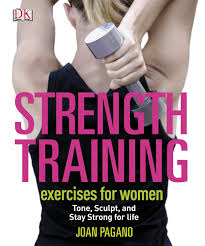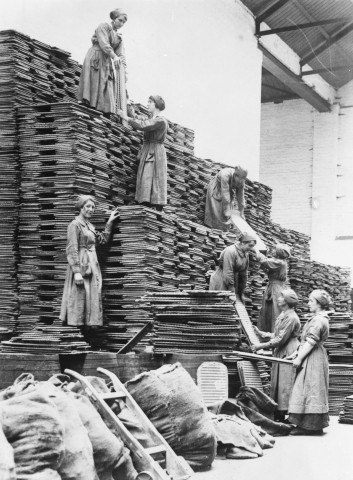Men are healthier and happier than women in general according to a new survey.

Health and Happiness, a nationwide study of 2,000 men and women found that men reported a higher rate of happiness when it came to their weight, shape, appearance, and the way they are perceived by others (55%). Women, on the other hand, were more self-conscious and slightly less satisfied with their happiness levels at around 49%. Women are also much more likely to try dieting (71%) compared to men (47%).
Men don’t feel stressed as often either. Almost 60% of male respondents said they only felt stressed once a month, whereas 60% of women said they felt anxious once a week or more.
Over 70% of men also claim they rarely felt depressed or had mood swings, compared to half of women (50%) who admitted to feeling low or unhappy at least once a month, if not more.
Male respondents reported that they were less likely to have trouble sleeping at night – 51% said restless sleep occurred around once a week or more, compared to 60% of women.
Headaches, bloating or poor digestion were less of a problem among men. Almost half (49%) said they rarely got headaches, compared to 64% women who said they experienced them at least once a month or more. For 70% of men, bloating and poor digestion would only occur once a month or less, but almost half (43%) of women said it was a weekly or daily problem.
Men also reported higher satisfaction levels when it came to their professional lives, from job security (51%) and salary (45%) through to career prospects (46%) and overall finances (50%).
Londoners rate themselves the healthiest
Londoners rate their city the health capital of the UK, with 59 per cent of people describing themselves as ‘healthy’, the highest proportion in the UK and above the national average of 54 per cent. The average units of alcohol consumed per week was relatively low at 5.5 units, compared to Manchester, which saw the highest average of 6.7 units. 79 per cent are non-smokers, and only 12 per cent classed themselves as regular smokers. Londoners are also keen exercisers, with half doing at least 20 minutes of exercise twice a week or more. They have a high sleep average of 6.7 hours per night and get their serving of five a day an average of 3.16 times per week, compared to the lowest average of only 2.6 times a week in Belfast.
Sleep leads to happiness in Sheffield
Sheffield has been revealed as being home to the happiest residents, probably because they are most likely to get the right amount of sleep. 40 per cent said they get a healthy average of seven hours sleep per night, compared to the national average of 34 per cent. Under half (48 per cent) said they were only likely to experience difficulty sleeping once a month or less. That might be why one in ten said they never feel stressed or anxious. They were also happiest in the country with their family life (75 per cent), where they live (66 per cent), shape and weight (54 per cent), and appearance (55 per cent), compared to their respective national averages of 69 per cent, 62 per cent, 52 per cent and 52 per cent.
Feeling glum in Brum
Birmingham was revealed as the unhappiest and most stressed city in the UK. The city had the highest number of smokers and its residents suffered the most ailments in the country. Brummies had the lowest average when asked to rate their happiness in terms of their relationships (56 per cent), family lives (63 per cent) overall health (55 per cent) and their appearance (50 per cent), below the respective national averages of 60 per cent, 69 per cent, 60 per cent and 52 per cent.
Over 30% are smokers and the city has the second lowest quitting rate. When it came to stress and anxiety, 62 per cent said they experienced one or the other once a week or more. Jobs were cited as the biggest cause of stress (31 per cent) closely followed by money (29 per cent). Brummies also suffer the most ailments, with 48 per cent experiencing bloating and poor digestion, 44 per cent having headaches, and 47 per cent complaining of low moods once a week or more. Nearly half (44 per cent) reported difficulty sleeping most nights.
Unhealthy but loved up in Belfast
Almost half (46 per cent) of respondents from Belfast described themselves as ‘unhealthy’ when asked to rate their current health status – the highest percentage in the country. Over half (53 per cent) complain of difficulty sleeping once a week or more and one in ten say they get daily headaches. More than one in four (27 per cent) experience low moods or depression once a week or more, and 37 per cent admitted that they would only do 20 minute workout sessions once a month or less. They were also the least likely to get their portions of five-a-day each week.
Although Belfast had the fourth highest number of smokers in the UK, it also had the best quitting rate, with a quarter of people saying they have given up smoking – the highest in the country. They also came top of the poll when questioned about how happy they were in their relationships and love life, with an average happiness score of 67 per cent. They also reported the most satisfying sex lives, with an average happiness rating of 55 per cent – above the national average of 51 per cent.
Cardiff is the capital of cardio
People living in Cardiff are the exercise pros of the UK with over half (54 per cent) doing at least 20 minutes of exercise twice a week or more, the highest percentage in the country. But despite high levels of exercise, Cardiff residents are the least content with their shape and weight, with an average happiness score of 49 per cent, just below the national average of 52 per cent.
When it came to money, however, the city was the happiest with their overall finances, with an average happiness rating of 52 per cent, compared to the national average of 49 per cent.
Sleep deprived Scots
Edinburgh is home to anation of sleep deprived residents with nearly 1 in 10 people only getting up to four hours sleep a night, a good two and half hours below the national average. When they do sleep, over 70 per cent said they have restless nights or difficulty sleeping. Feelings of stress and anxiety were a weekly occurrence among 47 per cent of respondents and money was cited as being the biggest cause of stress (39 per cent). The city also experienced a high proportion of daily ailments with one in five suffering from arthritis and joint problems every day – the most in the country.
Manchester drinks the most
Manchunians have admitted to being the biggest drinkers in the UK with the highest weekly average units of alcohol consumed. Residents admitted to drinking an average of 7 units of alcohol per week, compared to the national average of 5 units, and 15 per cent disclosed that they consume on average over 15 units per week.
Despite this, almost half (49 per cent) of residents described themselves as healthy when asked to rate their health status. Manchester was also revealed to be the second keenest city when it comes to exercise. Nearly one in four claim to do at least 20 minutes of exercise four times a week or more, closely behind the highest which was Cardiff at 26 per cent.
There is also a relatively low rate of smokers, with only 12 per cent of people regarding themselves as regular smokers.
Bristolians best at beating the bulge
Bristol is the city of successful dieters, with 42 per cent saying they have tried dieting and that it has worked for them. 17 per cent of respondents said they hadn’t tried to diet but would be willing to give it a go. They get their serving of five a day on average three times a week but happiness levels are below the national averages when it comes to their salary, career prospects, appearances, job security and overall finances.
Liverpool high anti-diet rate
Liverpool has the highest rate of anti-dieters with a quarter of residents saying they would be reluctant to try one – the highest in the country. Only 14% who had never tried one before said they would be open to the idea, still the lowest percentage in the country. They are also one of the least likely cities to get regular exercise with 36 per cent reporting 20 minutes of exercise once a month or less. 76 per cent said they felt stressed once a month or more, the second highest in the country after Birmingham.
Leeds stressed and losing sleep
Over half of Leeds residents (54 per cent) experience stress once a week or more. Money was cited as the biggest cause of stress (34 per cent), followed by jobs (24 per cent) and then family (14 per cent). Leeds also experiences frequent levels of sleep difficulty, with 64 per cent saying they have trouble sleeping once a week or more. Over one in ten admitted to only getting up to 5 hours of sleep a night.









